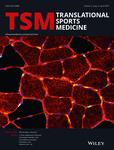A damaging punch: Assessment and application of a method to quantify punch performance
Abstract
Measurement of punch performance in a reliable, quantitative manner is relevant to combat sport, military, and concussion research. A punching protocol (3MPT) was developed, based on performance demands of amateur boxing, and evaluated on a custom-built punch integrator (PI). PI reliability and accuracy were assessed by calculating TE and CV for a range of known masses. A within-subject, repeated-measures design assessed the test-retest reliability of 3MPT. Fifteen male boxers (17.5 ± 0.5 years; 177.5 ± 9.5 cm; 73.0 ± 14.0 kg) were familiarized and then completed two 3MPT trials 90 minutes apart on 2 days (total of four tests). Peak punch force (N), relative punch force (N/kg), impulse (N·s), and rate of force development calculated to various time points were compared using a linear mixed model. Smallest worthwhile change (SWC) was also computed. PI data were reliable and accurate (CV <0.1%). TE and SWC comparisons revealed that 3MPT can detect moderate and large changes in performance; however, within-day reliability improved from day 1 (3.1%-13.8%) to 2 (2.3%-5.1%) indicating a possible learning effect. Likewise, differences between test one and two were greater on day 1 than 2. Numerous punch-related variables can be accurately and reliably measured using the 3MPT but repeat-trial familiarization is suggested to reduce between-test variability.




